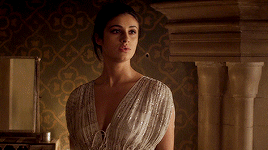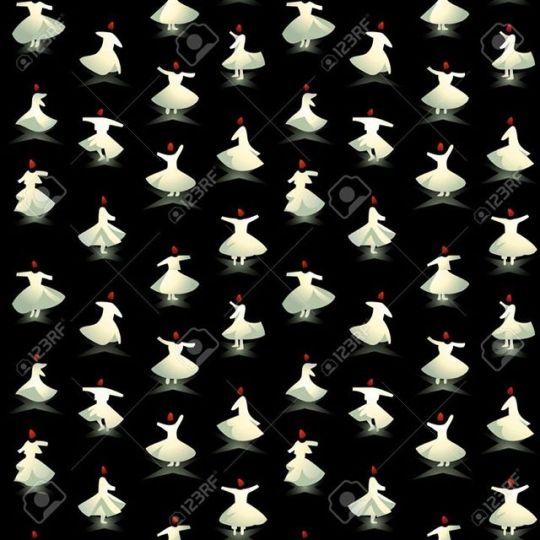#sani ali khan
Explore tagged Tumblr posts
Text
Spiderman: Across the Spider Verse live action cast









Live action cast for Spiderman: Into the Spider verse










#miguel o'hara#spiderman 2099#lyla#jess drew#SpiderWoman#pavitr prabhakar#spiderman india#gayatri singh#pavitr x gayatri#inspector Singh#hobie brown#spider punk#Margo Kess#spider byte#the spot#spot#across the spider verse#aaron diaz#kayla ewell#raven symone#ibrahim ali khan#janhvi kapoor#sani ali khan#caleb McLaughlin#marsai martin#Michael Trevino
120 notes
·
View notes
Text
TASK 001.

FULL NAME: nagasani banu begum ( نگاسانی بانو بگوم ) MEANING: a curious lady
BASIC INFORMATION
FULL NAME : nagasani banu begum ( نگاسانی بانو بگوم )
MEANING :
nagasani: curiosity ( نگاسانی )
banu: lady ( موز )
begum: title for daughter or wife of the leader ( شروع )
MONIKERS / NICKNAMES : sani ( family only ) ; ustinya rurik ( russian given name ) ; daughter of hindustan ( used by russian nobility ) ; аутсайдер ( foreigner, derogatory term used by either common folk or behind her back )
TITLE : tsarevna of russia ; sultan begum ( previously )
GENDER & PRONOUNS :
cisgender female
she/hers
ETHNICITY : hindustani
DATE OF BIRTH & AGE : janury 28th, 1535 / twenty-four
ZODIAC SIGN : aquarius
ORIENTATION : biromantic, bisexual
MARITAL STATUS : married to tsarevich yuri of russia
OCCUPATION : tsarevna of russia
CURRENT LOCATION : sasso corbaro castle, switzerland
BACKGROUND
PLACE OF BIRTH : fatehpur sikr, hindustan
RESIDENCES : moscow kremlimn, moscow
RELIGIOUS VIEWS : islam ; devout, but secretly so in order to not further publicly enrage her in-laws. in private, will not hesitate when telling yuri that she does not subscribe to the beliefs of catholicism.
EDUCATION : according to hindustani tradition, nagasani was raised to be a polite and servant young begum, and later on, a good wife to her husband. she indulge in leisurely activities from a young age, such as dancing and singing, and it was encouraged by her father and mother for the prospect of gracefulness. she's well taught in matters of diplomacy, knowing her marriage would most definitely be one of strategy, and has taken her time as late teenager and young adult to learn more about the world.
LANGUAGES SPOKEN : persian ( native ), urdu ( fluent ), hindu ( fluent ) russian ( advanced ), english ( advanced ), arabic ( conversational ), mandarin ( learning ), french ( learning ), german ( learning )
ALLEGIANCES :
the mughal empire ( first, by birth and heart )
the ottoman empire alliance ( second, by war )
FAMILY :
emperor humayun khan i ( father, deceased )
padshah bega sultan begum ( mother, deceased ) - born agathe vogt, granddaughter of a german settler & important merchant
emperor akbar khan i ( older brother )
murad mirza ( older brother )
nawab roshanara begum ( older sister )
shahzadi bakshi begum ( younger sister )
tsarevich yuri ( husband )
tsarevna karina ( infant daughter )
OTHER FAMILIAL RELATIONS :
padshah jahanara sultan begum ( sister-in-law )
mahal gulrukh sultan begum ( sister-in-law )
gulbadan devi sultan begum ( sister-in-law )
ahmad ali khan ( brother-in-law )
tsar dmitry ( brother-in-law )
tsarevna yelena ( sister-in-law )
tsarevna sophia ( sister-in-law )
countless nieces and nephews
APPEARANCE
FACECLAIM : anya chalotra
HAIR COLOUR / STYLE : long and wavy dark brown hair, silky looking. worn up, with typical russian nobility headdress when she must, but wears it down when in her chambers. prefers hindustani veils.
EYE COLOUR / SHAPE : almond shaped hazel eyes.
HEIGHT : 167 cm ( 5 feet 6 )
BUILD : lean, but healthy in appearance
SPEECH STYLE : nagasani is a mezzo-soprano, and speaks as such. she makes sure her enunciation is precise and speaks very clearly, outwardly and concisely. she's a woman of few words, but bullseyes each and every single one.
RECOGNIZABLE MARKINGS : birthmark on her upper inner left thigh, scar on her nostril from previously worn ring.
BEAUTY HABITS : her beauty habits align with the ones of the most hindustani nobles - she bathes often, despite the weather in moscow not requiring it as much as the one in fatehpur sikr. she likes to wear her eyelids shades of green and blue, but the right pigment is hardly found in moscow and perhaps the practice not well seen for a woman who should be striving to become russian-like. nagasani cares for her skin with plant based oils, despite straying from any particular one with a more noticeable scent, due to her position in foreign court.
PERSONALITY
TROPES : final girl ; brainy brunette ; altar diplomacy ; maligned mixed marriage ; tranquil fury ; illegal religion
INSPIRATIONS : cersei lannister ( asoiaf ) ;
MBTI : istj ; the logistician ( assertive )
ENNEAGRAM : type 4 ; the individualist
ALIGNMENT : true neutral ( i know )
TEMPERAMENT : choleric ( melancholic, sanguine, phlegmatic )
HOGWARTS HOUSE : slytherin
POSITIVE TRAITS : decisive, goal oriented, protective, logical, mature
NEGATIVE TRAITS : lustful, scheming, judgemental, stubborn, temperamental
HABITS : bowing her head as a greeting compliment
HOBBIES : singing, dancing, dressmaking.
USUAL DEMEANOR : nagasani holds her head up high amongst the russian nobles. she knows her place, of course, and will do what she must to protect herself and her child, but she will not allow disrespect from any of her in-laws. she usually walks like a boss, pretty much.
HEALTH
PHYSICAL AILMENTS : none, apart from common cold and fevers every now and then.
NEUROLOGICAL CONDITION : the tsarevna is neurotypical. despite being somewhat paranoid with her russian counterparts, it would not be considered a neurological condition. she's focused and holds an incredibly long attention span.
PHOBIAS : thalassophobia ( fear of the sea )
ALLERGIES : none
SLEEPING HABITS : nagasani doesn't sleep uncomfortably, but she's a very light sleeper, almost as if she sleeps with one eye open. she feels as if she's surrounded by enemies.
SOCIABILITY : she's not the most social in russian court, most definitely. she wasn't in hindustan, either, but she used to be a warm host, a kind one, too. nowadays she mostly keeps to herself and watches. she starts conversations only if she deems it will be fruitful for her ultimate goal, and doesn't beat around the bushes much, while still making sure to assess the person's intentions before spilling the beans.
ADDICTIONS : i wouldn't say nagasani has an addiction, but the closest thing to it would be the... hobby she found in sexual encounters of more zandik aspect.
5 notes
·
View notes
Photo

http://ift.tt/2ABww2D Download world's largest collection of Sufi Music. TheSufi.com features more than 5000+ high quality MP3 of 100+ artists, some notables include: ● Nusrat Fateh Ali Khan, the undisputed King of Qawwali. Nusrat Sahib was the first Qawwal whose voice featured in Hollywood movies. He established the genre of Qawwali in mainstream media following his collaborations with Peter Gabriel. TheSufi.com app features the more than 200 tracks of NFAK. ● Abida Parveen, the undisputed Queen of Sufi Music. Hailing from Larkana [Sindh], Abida Begum raised popularity of Arfana Kalam to unprecedented levels and has mesmerized generations. She is also knows for her beautiful ghazal singing. 100+ High Quality MP3. ● Rahat Fateh Ali Khan, the worthy Janasheen of Ustad Nusrat Fateh Ali and the reigning King Qawwal. Rahat also proved his versatility with his Bollywood singing ● Sabri Brothers, legendary Aashiq-e-Rasool whose Qawwalis such as Tajdar-e-Haram and Bhar do Jholi Meri have inspired generations of musicians and continue to do so. ● Junoon, the greatest Sufi Rock band ever from Pakistan. ● Kalam Allama Iqbal sung by various artists. From Allama’s Shikwa and Jawab-e-Shikwa to Masjid-e-Qurtaba, listen to amazing Kalam-e-Iqbal by artists including Sajjad Ali, Noor Jehan, Shahzad Roy and more. ● Alam and Arif Lohar, one of the greatest Punjabi artists, whose Punjabi folk music such as Jugni is still loved by millions. ● Allan Fakir, the renowned fakir of Sindh, who popularized kalam of Shah Abdul Latif Bhittai to masses. ● Amjad Sabri, the nephew of Maqbool Sabri, who left us untimely but his voice remains with us with his Qawwalis, Hamd and Naat. ● Faiz Ahmad Faiz Kalam, listen to Faiz Sahib’s exceptional Urdu poetry sung by Tina Sani as well as recitations by Zia Mohyeddin. ● Hans Raj Hans, the legendary Punjabi & Folk artist of India sings Punjabi Sufiana Kalam such as Bulleh Shah. ● Hina Nasrullah, one of the finest new voices in Hamd, Naat, Sufiana Kalam and Kalam-e-Iqbal. ● Mekaal Hasan Band, another great artist who Sufi fusion music with mastero Jawad Bashir on Vocals, Mekaal Hasan on guitars and Pappu on flute. ● Qaseeda Burda Sharif, one of the most beautiful Naats ever penned by Imam al-Busiri of Egypt. ● Rabbi Shergill, one of the exceptional music artists sings ever-living verses of Bulleh Shah. ● Reshma, the most authentic nomad voice from Pakistan, which will never fade away with tracks like Chori Chori. ● Saeen Zahoor , the malang from Okara, whose Allah Allah at BBC Words awards ● Sanam Marvi, the greatest singer from Sindh after Abida Parveen, with authentic vocals that have won millions of hearts. ● Kalam Bulleh Shah & Sultan Bahu, sung by artists from both Pakistan and India. ● Wadali Brothers, the amazing duo from Amritsar, Punjabi, who created a unique place in Sufi music genre with Aa Mil Yaar album and continue so ● Zila Khan, talented daughter of Ustad Vilayat Khan, who rose to fame with exceptional ghazal and sufiana singing. http://ift.tt/2Buzs4U
3 notes
·
View notes
Photo

It was announced more than a year ago that producer Ronnie Screwvala has acquired the rights to make a biopic on the life of tennis star Sania Mirza. In a recent interview, Sania has expressed the list of actresses she would like to see play her in the film. Earlier, Sani had expressed that she would like to see her close friend and actress Parineeti Chopra to play the role.
However, in an interview with an entertainment portal Sania said that Parineeti cannot play her role as she is playing Saina Nehwal for her next. She then listed out the names of actresses who she feels can play her role. She named Alia Bhatt, Anushka Sharma, Deepika Padukone and Sara Ali Khan as her preference. The tennis star further said that a lot would depend on the script. Currently, the film is in the pre-production stage and they are looking for directors right now.
Talking about the project, Sania Mirza while talking to Kareena Kapoor Khan on her show said, “It’s going to be a mutual thing. I need to sit down with the writers because even though I wrote an autobiography, I feel that a lot of people don’t really know what actually a sports person goes through. They always see the glitz and the glamour, the red carpets… But they don’t actually see the hours of hard work that goes into it, the sacrifices your parents make, financially or whatever it is. So I would like to be an active part of it.”
Also Read: Parineeti Chopra shares a throwback picture from school play with her schoolmates and it is too cute for words
March 27, 2020 at 02:07PMSania Mirza says her friend Parineeti Chopra cannot do her biopic; names other actresses https://ift.tt/2wElNYk
0 notes
Photo

Ya Mustafa, Nur-ul-Huda, Sani Tera Koi Nahin – Ustad Nusrat Fateh Ali Khan’s Beautiful Naat http://bit.ly/2PyrQCZ
0 notes
Text
Türkiye’nin en önemli ekonomi zirvesi, 20-21 Mart tarihlerinde gerçekleşecek
Türkiye’nin en önemli iş ve ekonomi buluşması Uludağ Ekonomi Zirvesi, 20-21 Mart’ta gerçekleşecek. Bu yıl 9’uncusu düzenlenecek olan Zirve, Türkiye ve dünyadan 2 bine yakın katılımcı ve 100’ün üzerinde konuşmacıyı ağırlayacak.
Capital, Ekonomist ve StartUp dergileri tarafından bu yıl 9’uncusu düzenlenen, Türkiye’nin en önemli iş ve ekonomi buluşması Uludağ Ekonomi Zirvesi, 20-21 Mart 2020 tarihlerinde gerçekleşecek.
İki gün boyunca Türkiye’den ve dünyadan 2 bine yakın katılımcıyı ağırlayacak Zirve’de, 100’ün üzerinde konuşmacı yer alacak. Uludağ Ekonomi Zirvesi’nde bu yıl; ‘Sosyal Yatırım & İstihdam’, ‘Yeni Enerji Oyunu’, ‘Dijital İş ve Büyüme’, ‘Global Ekonomi’, ‘Sürdürülebilirlik’, ‘Futbol ve Ekonomi’, ‘Paylaşım Dalgası’, ‘Suyun Geleceği’, ‘Bankacılık Ajandası’, ‘Küresel Gelecek/ İyi Şirket’, ‘Yeni Nesil Liderlik’, ‘Akıllı İş Dönüşümü’, ‘Globalde Büyüyenler’ ve ‘Startup Yatırımları’ gibi konular ele alınacak.
Dünyaca ünlü konuklar Zirve’de…
Zirve, MEDEF Başekonomisti M. Olivier Redoules, Malala Fonu eski CEO’su Farah Mohamed, Ekonomist Prof. Dr. Steve Hanke, Nantes Üniversitesi 3D uzmanı Prof. Benoit Furet ve ‘AI Republic’ Kitabı yazarı Dr. Mark Esposito gibi dünyaca ünlü isimleri ağırlayacak.
Zirve’nin konuşmacıları arasında ayrıca T.C Tarım ve Orman Bakanı Dr. Bekir Pakdemirli, T.C Ulaştırma ve Altyapı Bakan Yardımcısı Dr. Ömer Fatih Sayan, T.C Enerji ve Tabii Kaynaklar Bakan Yardımcısı Alparslan Bayraktar ve Ticaret Bakan Yardımcısı Rıza Tuna Turagay yer alıyor. Cumhurbaşkanlığı İnsan Kaynakları Ofisi Başkanı Prof. Dr. Salim Atay, Cumhurbaşkanlığı Finans Ofisi Başkanı Prof. Dr. Göksel Aşan ve TCMB Başkanı Murat Uysal da Zirve’de, Türkiye’nin yarınını konuşacak.
Türk iş dünyasının liderleri Zirve’de buluşacak
9. Uludağ Ekonomi Zirvesi, Türk iş dünyasından ise; Esas Holding Başkan Yardımcısı Emine Kamışlı, Zorlu Enerji Grubu CEO’su Sinan Ak, SOCAR Türkiye Doğalgaz Yatırım Başkanı Gunter Seymus, TAV CEO’su Sani Şener, Limak Holding ve Türkiye Futbol Federasyonu Başkanı Nihat Özdemir, Eczacıbaşı Holding CEO’su Atalay Gümrah, Migros Ticaret A.Ş. İcra Başkanı Özgür Tort, Fiba Holding Yönetim Kurulu Başkanı Murat Özyeğin, Akfen Holding Yönetim Kurulu Başkanı Hamdi Akın, Sütaş Yönetim Kurulu Başkanı Muharrem Yılmaz, Vodafone Avrupa Başkanı Serpil Timuray, Şişecam Başkan Vekili ve Genel Müdürü Ahmet Kirman, Kale Grubu Yönetim Kurulu Başkanı Zeynep Bodur, Tekfen Holding Yönetim Kurulu Başkanı Murat Gigin, Yemek Sepeti CEO’su Nevzat Aydın ve Şölen CEO’su Elif Çoban gibi önemli isimleri ağırlayacak.
Finans dünyası, ekonominin geleceğini değerlendirecek
Türk iş dünyasının yanı sıra finans sektöründen de önemli isimleri bir araya getirecek olan Zirvede; Türkiye Bankalar Birliği Başkanı Hüseyin Aydın, Garanti BBVA Yönetim Kurulu Üyesi ve Genel Müdürü Recep Baştuğ, Odeabank CEO’su Mert Öncü, Alternatifbank Yönetim Kurulu Üyesi ve Genel Müdürü Kaan Gür ve HSBC Türkiye CEO’su Selim Kervancı ‘Bankacılık’ başlıklı oturumda finans sektöründeki son trendleri ve sektörün geleceğini tartışacak.
Zirve’nin ikinci gününde ise; dünya ekonomi ve siyaset çevrelerinden önemli isimleri buluşturacak. ‘Dünyadaki Değişimi Okumak’ başlıklı oturumda, Pakistan Ulusal Meclisi Üyesi, Milletler Topluluğu Kadın Parlamenterleri Başkanı Shandana Gulzar Khan, Tunus eski Maliye Bakanı Jaloul Ayed, Future is Asian kitabının yazarı Parag Khanna, Zimbabwe Başbakan Yardımcısı Arthur Mutambara ve Romanya eski Ticaret Bakanı Ioana Petrescu konuşmacı olarak yer alacak.
Türk sinema ve tiyatro dünyasının ünlü oyuncuları Zirve’de…
Türk sinema ve tiyatro dünyasının ünlü oyuncuları Halit Ergenç ve Taner Ölmez gibi renkli isimlerin de konuşmacı olarak katılacağı Zirve’de ayrıca başarılı işlere ve yeniliklere imza atan girişimciler, dikkat çekici konularla ekonomiye yön verecek yenilikleri ve beklentilerini anlatacak.
Girişimcilere özel Stars Of Region yarışması
Uludağ Ekonomi Zirvesi, bu yıl yine ‘Stars Of Region’ adlı yarışmaya da ev sahipliği yapacak. Galata Business Angels iş birliği ile gerçekleştirilecek yarışmada katılımcılar, girişimlerini Türkiye’nin en büyük melek yatırımcıları ve start up dostu liderlerinin karşısında anlatarak yatırım çekmeyi ve büyük ödülü kazanmayı hedefleyecek. Yarışmaya, Türkiye’nin yanı sıra Avrupa, Afrika, Ortadoğu ve bölgeden girişimcilerin de katılması bekleniyor.
Uludağ Ekonomi Zirvesi Hakkında: Dünyadan ve Türkiye’den birbirinden değerli konuşmacıları ve iş insanlarını buluşturan Uludağ Ekonomi Zirvesi, Capital, Ekonomist ve Start Up dergileri tarafından düzenleniyor. 2012 yılından bu yana organize edilen etkinlik, sektör liderleri ve medya tarafından ilgiyle takip edilirken birçok yeni fikre ve girişimciye de ışık tutuyor. Dünyaca ünlü ekonomistleri, şirketlerin CEO ve yöneticilerini ve ayrıca siyaset dünyasından önemli isimleri ağırlayan Uludağ Ekonomi Zirvesi, bugüne kadar Andy Grignon, Christian Wulff, Daron Acemoğlu, Darrel West, Derik Kim, Doron Avni, Howard Chase, Jack Straw, Jared Cohen, Jean Claude Trichet, Kai Georg Diekmann, Marc Faber, Mark Mulloch-Brown, Nouriel Roubini, Shaun Rein, Simon Calder, Yousuf Mohamed Al-Jaida, Ali Koç, Ali Sabancı, Ali Kibar, Begümhan Doğan Faralyalı, Bülent Eczacıbaşı, Cem Boyner, Emine Kamışlı, Erol Bilecik, Fatih Terim, Hamdi Ulukaya, Hüsnü Özyeğin, Muhtar Kent, Temel Kotil ve daha birçok değerli isme ev sahipliği yaptı.
Hibya Haber Ajansı
Hibya Haber Ajansı
The post Türkiye’nin en önemli ekonomi zirvesi, 20-21 Mart tarihlerinde gerçekleşecek appeared first on Kamu365 | Dünya Gündemi.
from WordPress https://ift.tt/39yIAmN via IFTTT
0 notes
Link
Saibaan OST Geo Entertainment, CAST: Sabreen hisbani, Sana Fakhar, Ali Khan, Saleem Mehraj, Mizna Waqas, Umair Laghari, Director: Sami Sani, DOP: M Shahzad Malick, Writer: Ghulam Sabir & Mehmood Elahi, Producer: Erfan Ghanchi,
0 notes
Text
Coins of Bengal Sultanate-II
In the earlier blog, we discussed the governors of the Bengal Sultanate appointed by the Delhi Sultans. There were nearly around 25 governors appointed by Delhi Sultanate and six of them successfully issued coins in their name. Today we will discuss the first independent Sultan of Bengal Sultanate, the subsequent dynasties who ruled the Bengal Sultanate and about the coins of Bengal Sultanate.
Bengal has been always under trouble and turmoil. It was always under the pressure from the Delhi Sultanate. In the year 1310 CE, the provinces of Bengal were divided into two parts East and West Bengal. Later, in the year 1338 CE with the successful invasion of the Fakhruddin Mubarak Shah, the governor of East Bengal got tied up with the Delhi Sultanate.
After the death of the Fakhruddin Mubarak Shah in the year 1339 CE the provinces of Bengal came into the hands of the Shams al-Din Ilyas Shah. Shams Al-Din Ilyas Shah was the first independent sultan of Bengal Sultanate. Later from 1339 CE till 1538 CE, the Bengal Sultanate was ruled by four dynasties
Ilyas Shahi Dynasties (1339-1406 CE)
Deva Dynasty (1406-1442 CE)
Ilyas Shahi Dynasties (1442-1481 CE)
Habshi King (1486-1493 CE)
Hussain Shahi dynasty (1493-1538 CE)
In the year 1552 CE the Bengal Sultanate came under the control of Sher Shah Suri. Sher Shah Suri and his family ruled Bengal till 1563 CE from Delhi. After the Sur dynasty, Bengal was ruled by the Afghan Kararani. The Kararani family ruled Bengal until 1576 CE and then Bengal came under the control of the Mughal Empire.
From the capture of Bengal in the year 1203 CE till 1574 CE, the Bengal Sultanate was ruled and dominated by many different dynasties of Turkic, Arab, and Persian, Bengali and Abyssinian origins.
The coins of the Bengal Sultanate have an inscription with the name and title of the ruler on the obverse side of the coin. These inscriptions are usually written within different geometric designs like circle, square, etc. All the coins of the Bengal Sultanate can be divided into four categories
Name and title of king on the obverse side and shahada on the reverse side, sometimes the name of Abbasid Caliph is also written with Shahada
Name and title of the king on the obverse side and name Abbasid Caliph on the reverse side
Name and title of the king on the obverse side and religious title on the reverse
Name and title on the king are spread on both obverse and reverse side of the coin.
Establishment of Ilyas Shah Dynasty
Shams al-Din Ilyas Shah
When East Bengal tied up with Delhi Sultanate, the Delhi government lost its control over Bengal and the separate states were established by the governors. Fakhruddin Mubarak Shah got control over Sonargaon, Alauddin Ali Shah in Lakhnauti, and Shams al-Din Ilyas Shah got control over Satgaon.
Shams Al-Din Ilyas Shah worked as a governor of Bengal for almost 19 years. In the year 1942, he defeated the rulers of Sonargaon and Lakhnauti and united the Bengal region under an independent power hold. Shams Al-Din Ilyas Shah managed to conquer both East and West Bengal and sat on the throne of Bengal Sultanate.
Shams Al-Din Ilyas Shah was the first sultan of Bengal Sultanate; after sitting on the throne of the Bengal Sultanatehe proclaimed himself as the “Shah of Bangalah”. Shams Al-Din Ilyas Shah played an important role in Indian Ocean trade and Asian Pacific trade. He had stretched his trade route from the Red Sea and East Africa in the west to China, Brunei, Malacca and Sumatra in the east.
The Ilyahi Shahi Dynasties ruled Bengal for almost 150 years. This dynasty was one of the leading diplomatic, economic and military powers in the Indian subcontinent. Shams Al-Din Ilyas Shah was a liberal ruler, he used to treat all his members of the court equally.
Coins of the Bengal Sultanate issued by this dynasty with the legends inscribed within different geometric designs like circle, square, quadrifoil, Star, octofoil are very famous.
The above gold Tanks was issued by Shams Al-Din Ilyas Shah.
obverse :- Al-Sultan Al-‘Adil Shams Al-Dunya Wa ‘L Din Abu ‘L Muzaffar Ilyas Shah Al-Sultan
Reverse: – Sikandar Al-Sani Yamin Al-Khilafa (Nasir) Amir Al-Mu ‘Minin
Deva Dynasty
The reign of Ilyas Shah Dynasty was interrupted by the uprising power of Raja Ganesh. Raja Ganesh was the descendant of Deva Dynasties of Bengal. The ancestors of Raja Ganesh were the landlord of Bengal. When the Muslim rulers soughed out the noble landlord for their administrative affairs; Raja Ganesha was appointed as an officer of Pandua by Ilyas shahis. Later, when Ilyas Shah Dynasty started becoming weaker he took advantage of their weakness and seized power in Bengal. Raja Ganesh wanted to place his son, KansJha or Kans Shah on the throne of Bengal Sultanate. To place his son on the throne of the Bengal Sultanate he converted his son into Muslim and made him sit on the throne with the title Jalaluddin Muhammad Shah.
After the Jalaluddin Muhammad Shah his son, Shams-ud-Din Ahmad Shah sat on the throne of Bengal Sultanate.
Coins of this dynasty are different as compared to the other coins of Bengal Sultanate. The Deva Dynasty coins are very notable as the language and script used by them on their coins is Bengali and the date used is of Saka era.
Coins issued by Jalal Al-Din Muhammad have his name and title written within the geometrical design on the obverse side. Some coins issued by him have the image of Lion facing towards the right, with the short inscription above.
Coins issued by Danujamarddana Deva and Mahendra Deva have similar legends used on their coins which reads as
Sri Sri ……….. (King’s name)
Sri Chandi Charana Parayana
The last ruler of Deva Dynasty was Shams-ud-Din Ahmed Shah. In the year 1436 CE he was killed by one of his noble and once again the power of the Bengal Sultanate came into the hands of Ilyas Shah Dynasty. The ruler who restores Ilyas Shah Dynasty was Mahmud Shah the descendant of the Shams al-Din Ilyas Shah. The last ruler of Ilyas Shah Dynasty was Jalal-ud-Din Fath Shah; he was killed by one of his Habshi commanders, Sultan Shahzada, who sat on the throne under the title Barbak Shah. This was the end of Ilyas Shah Dynasty from Bengal.
The above coin was issued by Danumarddana Deva
Obverse: sri sri danuja marddana deva
Reverse: sri chandi charana parayana
Habshi King
After Ilyas Shah Dynasty the Habshi king sat on the throne of the Bengal Sultanate with the title Saif-Al-Din Firuz. He sat on the throne of the Bengal Sultanate in the year 1488 CE and ruled it till 1490 CE. After Saif-Al-Din Firuz his son Qutb-Al-Din Mahmud sat on the throne of Bengal Sultanate. Qutb-Al-Din Mahmud was murdered by an Abyssinian named Sidi Badr; who later sat on the throne of the Bengal Sultanate under the title Shams-Al-Din Muzaffar. Shams-Al-Din Muzaffar was a very violent and cruel ruler. Due to his cruelty and violence a rebellion broke out among common people. He ruled the Bengal Sultanate for almost 3 years. After 3 years he was killed by his Wazir, Sayyid Husain.
The above coin was issued by Saif Al-Din Firuz
Obverse: Saif Al-Dunya Wa ‘L Din Abu ‘L Muzaffar Firuz Shah Al-Sultan Khallada Allah Mulkahu Wa Sultanahu
Reverse: Shahada
Hussain Shahi dynasty
Hussain Shahi dynasty begins with the reign of Hussain Shah. Hussain Shah was the great Sultan of all the sultans of Bengal for bringing a cultural Renaissance during his reign. His rule was one of the most prosperous periods of Bengal Sultanate. Hussain Shah sat on the throne of the Bengal Sultanate in the year 1493 CE and ruled it till 1519 CE.
Hussain Shahi Dynasty rules the Bengal Sultanate for almost 44 years. The last ruler of the Hussain Shahi dynasty; Ghiyath-Al-Din Mahmud was not a successful ruler. He is considered as weak, pleasure-loving and easy-going ruler. Due to his this attitude, he didn’t put much attention on his state affairs. His reign is marked by the rebellions amongst the people led by Sher Khan, a governor of south Bihar on half of Afghan Lohanis. Sher Khan invaded Bengal and drove Mahmud out of Bengal. Later Mahmud took refuge at the court of Mughal Emperor Humayun.
The above coin was issued by Ala Al-Din Hussain Shah
Obverse:- Al-Sultan Al-Fath Al-Kamru Wa Kamta Wa Jajnagar Wa Urissa ‘Ala’ Al-Dunya Wa ‘L Din Abu ‘L Muzaffar
Reverse:- Husain Shah Al-Sultan Bin Sayyid Ashraf Al-Husaini Khallada Allah Mulkahu Wa Sultanahu
Conclusion
The Bengal Sultanate was ruled by different dynasties in the different years in the medieval period. The coins of the Bengal Sultanate are very unique compared to the other sultanate like Delhi, Malwa, Gujarat, Kashmir, etc. The weight of the silver tanka was a little under a standard; the weight of tanks issued from certain mints was reduced in later years.
India has a lot of such lesser known dynasties and beautiful their coinages. You can buy rare Indian Coins online and many more exciting products from our site.
Share
The post Coins of Bengal Sultanate-II appeared first on Blog | Mintage World.
0 notes
Video
Ya Mustafa Noorul Huda Sani Tera Koi Nahin By Nusrat Fateh Ali Khan
0 notes
Text
http://thebalochistanpost.net/2019/02/balochistan-districts-distributed-among-gulf-royals-for-hunting/
Balochistan districts distributed among Gulf royals for hunting
February 12, 2019
The federal government of Pakistan has issued at least 12 special permits to the members of royal families of Gulf states to hunt the internationally protected migratory bird, houbara bustard, in Balochistan during the 2018-19 season, reported Pakistan’s leading daily Dawn News.
According to highly placed sources, the special permits have been issued to an Emir and his father, a president, rulers and crown princes, a governor and other members of the royal families of Saudi Arabia, the United Arab Emirates (UA E), Qatar and Bahrain, added daily Dawn.
According to the permits signed by the foreign ministry`s Deputy Chief of Protocol Mohammad Adeel Pervaiz, Governor of Tabuk Prince Fahd bin Sultan Abdul Aziz Al-Saud of Saudi Arabia has been allowed to hunt houbara bustards in Awaran district and Nushki (excluding Nushki city) and Chagai district (excluding the area in the northwest corner of Balochistan located in Chagai district (Nokundi) and Prince Mansour bin Mohammad S. Abdul Rehman Al-Saud in Dera Bugti in Sui district, report read.
The UAE president and Abu Dhabi ruler Sheikh Khalifa bin Zayed Al-Nahyan and Abu Dhabi`s crown prince Sheikh Mohammad bin Zayed Al-Nahyan have been allocated Panjgur, Kharan, Kalat and Zhob districts (excluding Qamar Din Karez).
UAE president`s son and a former deputy prime minister Sheikh Mohammad bin Khalifa bin Zayed Al-Nahyan has been allowed to hunt the migratory bird in Loralai district (excluding Duki area), Abu Dhabi ruler`s representative in the Western Region Sheikh Hamdan bin Zayed Al-Nahyan in Lehri Tehsil of Sibi district (minus Domki area) and UAE`s Vice President and Prime Minister and Dubai ruler Sheikh Mohammad bin Rashid Al-Maktoum and Crown Prince of Dubai Sheikh Hamdan bin Mohammad bin Rashid Al-Maktoum in Khuzdar and Labella district and the area in the northwest corner of Balochistan located in Chagai district (Nokundi).
Emir of Qatar Sheikh Tamim bin Hamad bin Khalifa Al-Thani has been allotted Washuk district, his uncle Sheikh Jassim bin Hamad bin Khalifa Al-Thani Musakhel and Drug Tehsils in Musakhel district and Sani ShoranTehsil in Kachi district.
A member of the Supreme Council of the royal family of Qatar Sheikh Ali bin Abdullah Thani Al-Thani has been allotted Kech district less Hoshap.
Another member of Qatari royal f amily Sheikh Faisal bin Nasser bin Hammad Al-Thani has been allowed to hunt houbara bustards in Qila Saifullah district, including Kakar Khurasan and Qamar Din Karez.
Commander in Chief of Armed Forces of Bahrain Sheikh Khalifa bin Ahmed Al-Khalifa has been allocated Toisar Tehsil in Musakhel district.
Minister of Interior of Bahrain Lt Gen Sheikh Rashid bin Abdullah Al-Khalifa has been issued permit to hunt the prized bird in Jafferabad district.
The sources said the Pakistan Tehreeki-Insaf government has issued the special hunting permits though Prime Minister Imran Khan used to criticise the previous governments for issuing such permits when he was in the opposition.
The PTI had never allowed the Arab rulers to hunt the highly rare bird in Khyber Pakhtunkhwa where it was in power.
They said Adviser to the PM on Climate Change Malik Amin Aslam, who is also the South East Asia vice president of the International Union for Conservation of Nature (IUCN), looked the other way when these permits were being issued to the hunters having petro-dollar stuffed pockets. The IUCN is one of the largest NGOs working globally for nature conservation.
The sources said by issuing special permits to Arab hunters, who considered the houbara bustard to be an aphrodisiac, the government had violated various international nature conservation conventions as well as local wildlife protection laws.
Pakistanis are not allowed to hunt this migratory bird.
The sources said by issuing these permits the government had also put the Generalised Scheme of Preferences (GSP-Plus) status given to it by the European Union under threat because as a beneficiary of the GSP Plus, Pakistan has to follow numerous international agreements, particularly those concerning the nature conservation. They said that the EU periodically checked if the country concerned was following its international commitments or not, reported the daily.
0 notes
Link
Are you looking for Shakib Khan upcoming movie? Today I give up you a list of movie that movie is Shakib Khan upcoming movie! Here you can get the Shakib Khan upcoming Bangla film name with Co-Artist name.
Nolok:
Nolok is Bangladeshi Comedy and Romantic film. This film director is Shakib sonet. Shakib sonet is the new director. Shakib khan loves the new directors. So, Shakib sonet is one of them. Nolok Movie Starring:
Shakib Khan
Eamin Haque Bobby
Omor Sani
Rajatava Dwatta
Tariq Anam Khan
Mousumi
Rebeka
Supriya Dwatta
Nolok Movie Song:
Song: Shital Pati
Writer: Ferari Forhad
Singer: Asif Akbar
Shahenshah
Shahenshah is a Bangladeshi romantic film. Shahenshah movie produced by Selim Khan and directed by Shamim Ahmed Roni.
Bangladeshi Romantic Actress Nusrat Faria first time starting acting with Shakib Khan and also acting this movie newcomer Rodela Jannat.
Shahenshah Movie starring:
Shakib Khan
Nusrat Faria
Rodela Jannat
Misha Sawdagar
Operation Agneepath
Operation Agneepath is the most waited movie of Shakib Khan. Because this is the first movie where Bangla film lover see the look of Hollywood style work! This masterpiece movie is directed by Ashiqur Rahman. This film is produced by the Australian film company. Operation Agneepath Starring:
Shakib Khan
Shiha Ali Khan
Misa Sawdagar
Taskin Rahman
Tiger Robi
Sayelaluddin Mahelder (Who is Indian film Actor).
I hope this post: Upcoming Bangla movie Shakib khan post you liked. If you like this post then share this post of your friends.
0 notes
Link
চ্যানেলটি SUBSCRIBE করে সাথে থাকুন মিনাক্ষীর প্রেম । Minakkhir Prem । Bengali Short Film 2019 । SM TV bangla short film 2019 new short film 2019 bangla natok 2019 stm Cast » Imran Khan, Sraboni Sinha, Nurul Islam Sany, Shamim Hosen Writer » Nurul Islam Sany Director by Ali Ahamed Producer by Nurul Islam Sany Edit » Nazmul Sheikh D.O.P by Shakil Ahamed A.D. D.O.P : Mir Yeasin Meckup : S K Sekendar Sort Film Video Location: Karanigonj Presents © SM TV Active SM TV Social Media Site facebook ✉ https://ift.tt/2Tg496z website ❄ https://ift.tt/2IAyYig Bengali Short Film All Playlist Link : https://goo.gl/SQLGmX Active SM TV Media Site Facebook Follow ✉ https://goo.gl/pf73bm Website Visit ❄ https://goo.gl/9Zmc2R Subscribe For Next New Short Film bangle natok, Bengali shot fil
0 notes
Text
Google Doodle celebrates 220th birth anniversary of Mirza Ghalib
Google's doodle today celebrates Urdu and Persian language poet, Mirza Ghalib on his 220th birth anniversary.
The doodle sees Ghalib, with his pen and paper, knitting his imaginations, with a backdrop of buildings of Mughal architecture.
Ghalib, born in Agra on December 1797, during the Mughal Emperor Bahadur Shah, was educated in Persian, Urdu and Turkish got and acquainted with language at an early age.
Ghalib started composing poetry at 11 and was also a prominent letter writer.
One of the things Mirza Ghalib continued to write in his poems was the idea that life is an ongoing painful struggle which ends only with life itself.
He is famously known for his Urdu Ghazals and was considered the most popular and influential poets of the Urdu language. His honorific was Dabir-ul-Mulk, Najm-ud-Daula.
Most notably, he wrote several ghazals during his life, which have since been interpreted and sung in many different ways by different people.
Ghazal singers like Jagjit Singh, Mehdi Hassan, Abida Parveen, Farida Khanum, Tina Sani, Mohammed Rafi, Asha Bhosle, Lata Mangeshkar, Rahat Fateh Ali Khan have sung his ghazals, as well as singers from all over South Asia, have sung many of his ghazals.
He got married at the age of 13 to Umrao Begum, daughter of Nawab Ilahi Bakhsh and moved to Delhi thereafter.
He died on 15 February 1869 in Delhi and his house in Old Delhi has been converted into "Ghalib Memorial" also called "Ghalib ki Haveli", which houses Ghalib's exhibitions.
]]>
0 notes
Photo

Dilbar De Deedar Ne Kieea Maino Masto Mast! [The Sight of my Beloved has made is ecstatic!] Complete Sufi Music Listing: Download more than 2000+ MP3 at http://ift.tt/2yy96dL 100 Best Qawwali Music Tracks Ever 40 Best Naat Tracks Ever 20 Best Kalam e Bulleh Shah Tracks Ever 20 Best Sufi Rock Tracks Ever 2017 Milad un Nabi (Mawlid) Special Aab e Revan (Farsi) Abdul Ghafoor Soomro Abdul Rauf Rufi Abida Parveen Allama Iqbal Kalam – Various Artists Akhtar Qureshi Alam Lohar Ali Haider Alim Qasmimov (Mugham Music) Allan Fakir Altaf Raja Ram Shankar Chhote Mazid Shola Amjad Ghulam Fareed Sabri Anandmurti Gurumaa Arieb Azhar Arif Lohar Armand Amar Aroshanti (Zen Searching For Silence) Ashi (Punjabi Sufi Songs) Aslam Sabri Qawwal Atif Aslam Azaans From Different Holy Mosques Aziz Ahmed Warsi Qawwali Aziz Mian Qawwal Badar Miandad Qawwal Badar and Bahadur Ali Khan Bahman Solati (Rumi Poetry Of Love) Bardes From Makran Barkat Sidhu Bulleh Shah Kaafian Bushra Sadiq Call Of The Sufis Eduardo Paniagua Emre Ensemble & Mehmet Cemel Yesilcay Fairuz Music From Baalbek Folk Festival Faiz Ahmad Faiz sung by Tina Sani Fanna Fi Allah Sufi Qawwali Party Fareed Ayaz & Abu Muhammad Qawwal Fasih Ud Din Soharvardi Haddad Alwi Featuring Sulis Cinta Rasul Hamid Ali Bela Hamid Ali Khan Hamza Shakkur Hans Raj Hans Hina Nasrullah Hossein Alizadeh Hossein Alizadeh + Madjid Khaladj Huriya Rafiq Qadri Ihsan Ozgen Imran Aziz Mian Inayat Hussain Bhatti Jagjit Singh Jagjit and Chitra Singh sing Mirza Ghalib Jalal Zolfonum & Soheil Zolfonum (Mystic String Music Of Iran) Junaid Jamshed Junoon Kashmiri Sufi & Folk Music Kavita Seth & Brij Bhushan Kazi Nazrul Islam (Rebel Poet of Bengal) Khursheed Ahmad Naat Mai Bhagi (Sindhi Folk and Sufi) Maulana Tariq Jameel [Urdu Bayan] Marghoob Ahmad Naat Mehnaz Mekaal Hasan Band Mercan Dede Sufi Dreams Mohammad Tufail Niazi Mohammed Iqbal Bahu (Heer Waris Shah & Saif ul Mulook) Mohsin Abbas Haider Morocco – The Music Of Islam Muhammad Rafi Naat Muniba Shaikh Naat Music From Afghanistan Music in the World of Islam: Strings, Flutes & Trumpets Music Of Islam – World Sufi Music Muzaffar Warsi Naat Najam Sheraz Noor Jehan Nusrat Fateh Ali Khan Nusrullah Khan Noori Owais Qadri Pathanay Khan Punjabi Sufi & Folk Music Qari Sadaqat Ali (Quran Recitation) Qari Sheikh Abdul Basit Abdul Samad Qari M Saeed Chishti Qari Shakir Qasmi Surah Recitations Qari Waheed Zafar Naat Qaseeda Burd Sharif Naat Quratulain Balouch (QB) Rabbi Shergill Rahat Fateh Ali Khan Rahat Multanikar Seraiki Sufiana Kalam Rashid Azam Naat Reshma Rifai Sufi Dervish Order Sufi Music Roop Kumar Rathod Sabri Brothers Qawwal Sadia Raza Naat Khawaan Saeen Zahoor Sami Yusuf Sanam Marvi Satnam Singh Sings Kalam Baba Farid Shafqat Amanat Ali Khan Shaukat Ali Shahida Parveen Shahram Nazeri Sharif Idu Shazia Manzoor Sings Sufiana Kalaam Sheikh Abdur Rahman Al Sudais (Imam-e-Kaaba) Sheikh Ahmad Al Ajamy Sheikh Ahmad Al Tuni Sheikh Mohamed Al Helbawy Egyptian Sufi Music Shubha Mudgal Shyama Perara (Rumi Recitations) Sufi Inspired Music from India Sufi Music Ensembles from Turkey & Egypt Sindhi Rajasthani Sufi Music Sufi Soul Music Sufi Whirling Music Semaa/Sama Sultan Bahu Sufiana Kalaam Surinder Kaur & Parkash Kaur Syubbanul Akhyar Ensemble (Indonesian) Tabrez Aziz Mian Qawwal Thind Kuldeep Umme Habiba Naat Ustad Jafar Hussain Khan Ustad Juman Wadali Brothers Warsi Brothers Yemen Music from the Heart Of Arabia Yusuf Islam (Formerly Cat Steven) Zahida Parveen Zia Mohyeddin Read Faiz Ahmad Faiz Zia Mohyeddin Reads Urdu Adab Prose Zia Mohyeddin Read Mirza Ghalib Zikr Rough Guide To Sufi Music Zila Khan http://ift.tt/2wM8ML8
5 notes
·
View notes
Text
Coins of Bengal Sultanate-II
In the earlier blog, we discussed the governors of the Bengal Sultanate appointed by the Delhi Sultans. There were nearly around 25 governors appointed by Delhi Sultanate and six of them successfully issued coins in their name. Today we will discuss the first independent Sultan of Bengal Sultanate, the subsequent dynasties who ruled the Bengal Sultanate and about the coins of Bengal Sultanate.
Bengal has been always under trouble and turmoil. It was always under the pressure from the Delhi Sultanate. In the year 1310 CE, the provinces of Bengal were divided into two parts East and West Bengal. Later, in the year 1338 CE with the successful invasion of the Fakhruddin Mubarak Shah, the governor of East Bengal got tied up with the Delhi Sultanate.
After the death of the Fakhruddin Mubarak Shah in the year 1339 CE the provinces of Bengal came into the hands of the Shams al-Din Ilyas Shah. Shams Al-Din Ilyas Shah was the first independent sultan of Bengal Sultanate. Later from 1339 CE till 1538 CE, the Bengal Sultanate was ruled by four dynasties
Ilyas Shahi Dynasties (1339-1406 CE)
Deva Dynasty (1406-1442 CE)
Ilyas Shahi Dynasties (1442-1481 CE)
Habshi King (1486-1493 CE)
Hussain Shahi dynasty (1493-1538 CE)
In the year 1552 CE the Bengal Sultanate came under the control of Sher Shah Suri. Sher Shah Suri and his family ruled Bengal till 1563 CE from Delhi. After the Sur dynasty, Bengal was ruled by the Afghan Kararani. The Kararani family ruled Bengal until 1576 CE and then Bengal came under the control of the Mughal Empire.
From the capture of Bengal in the year 1203 CE till 1574 CE, the Bengal Sultanate was ruled and dominated by many different dynasties of Turkic, Arab, and Persian, Bengali and Abyssinian origins.
The coins of the Bengal Sultanate have an inscription with the name and title of the ruler on the obverse side of the coin. These inscriptions are usually written within different geometric designs like circle, square, etc. All the coins of the Bengal Sultanate can be divided into four categories
Name and title of king on the obverse side and shahada on the reverse side, sometimes the name of Abbasid Caliph is also written with Shahada
Name and title of the king on the obverse side and name Abbasid Caliph on the reverse side
Name and title of the king on the obverse side and religious title on the reverse
Name and title on the king are spread on both obverse and reverse side of the coin.
Establishment of Ilyas Shah Dynasty
Shams al-Din Ilyas Shah
When East Bengal tied up with Delhi Sultanate, the Delhi government lost its control over Bengal and the separate states were established by the governors. Fakhruddin Mubarak Shah got control over Sonargaon, Alauddin Ali Shah in Lakhnauti, and Shams al-Din Ilyas Shah got control over Satgaon.
Shams Al-Din Ilyas Shah worked as a governor of Bengal for almost 19 years. In the year 1942, he defeated the rulers of Sonargaon and Lakhnauti and united the Bengal region under an independent power hold. Shams Al-Din Ilyas Shah managed to conquer both East and West Bengal and sat on the throne of Bengal Sultanate.
Shams Al-Din Ilyas Shah was the first sultan of Bengal Sultanate; after sitting on the throne of the Bengal Sultanatehe proclaimed himself as the “Shah of Bangalah”. Shams Al-Din Ilyas Shah played an important role in Indian Ocean trade and Asian Pacific trade. He had stretched his trade route from the Red Sea and East Africa in the west to China, Brunei, Malacca and Sumatra in the east.
The Ilyahi Shahi Dynasties ruled Bengal for almost 150 years. This dynasty was one of the leading diplomatic, economic and military powers in the Indian subcontinent. Shams Al-Din Ilyas Shah was a liberal ruler, he used to treat all his members of the court equally.
Coins of the Bengal Sultanate issued by this dynasty with the legends inscribed within different geometric designs like circle, square, quadrifoil, Star, octofoil are very famous.
The above gold Tanks was issued by Shams Al-Din Ilyas Shah.
obverse :- Al-Sultan Al-‘Adil Shams Al-Dunya Wa ‘L Din Abu ‘L Muzaffar Ilyas Shah Al-Sultan
Reverse: – Sikandar Al-Sani Yamin Al-Khilafa (Nasir) Amir Al-Mu ‘Minin
Deva Dynasty
The reign of Ilyas Shah Dynasty was interrupted by the uprising power of Raja Ganesh. Raja Ganesh was the descendant of Deva Dynasties of Bengal. The ancestors of Raja Ganesh were the landlord of Bengal. When the Muslim rulers soughed out the noble landlord for their administrative affairs; Raja Ganesha was appointed as an officer of Pandua by Ilyas shahis. Later, when Ilyas Shah Dynasty started becoming weaker he took advantage of their weakness and seized power in Bengal. Raja Ganesh wanted to place his son, KansJha or Kans Shah on the throne of Bengal Sultanate. To place his son on the throne of the Bengal Sultanate he converted his son into Muslim and made him sit on the throne with the title Jalaluddin Muhammad Shah.
After the Jalaluddin Muhammad Shah his son, Shams-ud-Din Ahmad Shah sat on the throne of Bengal Sultanate.
Coins of this dynasty are different as compared to the other coins of Bengal Sultanate. The Deva Dynasty coins are very notable as the language and script used by them on their coins is Bengali and the date used is of Saka era.
Coins issued by Jalal Al-Din Muhammad have his name and title written within the geometrical design on the obverse side. Some coins issued by him have the image of Lion facing towards the right, with the short inscription above.
Coins issued by Danujamarddana Deva and Mahendra Deva have similar legends used on their coins which reads as
Sri Sri ……….. (King’s name)
Sri Chandi Charana Parayana
The last ruler of Deva Dynasty was Shams-ud-Din Ahmed Shah. In the year 1436 CE he was killed by one of his noble and once again the power of the Bengal Sultanate came into the hands of Ilyas Shah Dynasty. The ruler who restores Ilyas Shah Dynasty was Mahmud Shah the descendant of the Shams al-Din Ilyas Shah. The last ruler of Ilyas Shah Dynasty was Jalal-ud-Din Fath Shah; he was killed by one of his Habshi commanders, Sultan Shahzada, who sat on the throne under the title Barbak Shah. This was the end of Ilyas Shah Dynasty from Bengal.
The above coin was issued by Danumarddana Deva
Obverse: sri sri danuja marddana deva
Reverse: sri chandi charana parayana
Habshi King
After Ilyas Shah Dynasty the Habshi king sat on the throne of the Bengal Sultanate with the title Saif-Al-Din Firuz. He sat on the throne of the Bengal Sultanate in the year 1488 CE and ruled it till 1490 CE. After Saif-Al-Din Firuz his son Qutb-Al-Din Mahmud sat on the throne of Bengal Sultanate. Qutb-Al-Din Mahmud was murdered by an Abyssinian named Sidi Badr; who later sat on the throne of the Bengal Sultanate under the title Shams-Al-Din Muzaffar. Shams-Al-Din Muzaffar was a very violent and cruel ruler. Due to his cruelty and violence a rebellion broke out among common people. He ruled the Bengal Sultanate for almost 3 years. After 3 years he was killed by his Wazir, Sayyid Husain.
The above coin was issued by Saif Al-Din Firuz
Obverse: Saif Al-Dunya Wa ‘L Din Abu ‘L Muzaffar Firuz Shah Al-Sultan Khallada Allah Mulkahu Wa Sultanahu
Reverse: Shahada
Hussain Shahi dynasty
Hussain Shahi dynasty begins with the reign of Hussain Shah. Hussain Shah was the great Sultan of all the sultans of Bengal for bringing a cultural Renaissance during his reign. His rule was one of the most prosperous periods of Bengal Sultanate. Hussain Shah sat on the throne of the Bengal Sultanate in the year 1493 CE and ruled it till 1519 CE.
Hussain Shahi Dynasty rules the Bengal Sultanate for almost 44 years. The last ruler of the Hussain Shahi dynasty; Ghiyath-Al-Din Mahmud was not a successful ruler. He is considered as weak, pleasure-loving and easy-going ruler. Due to his this attitude, he didn’t put much attention on his state affairs. His reign is marked by the rebellions amongst the people led by Sher Khan, a governor of south Bihar on half of Afghan Lohanis. Sher Khan invaded Bengal and drove Mahmud out of Bengal. Later Mahmud took refuge at the court of Mughal Emperor Humayun.
The above coin was issued by Ala Al-Din Hussain Shah
Obverse:- Al-Sultan Al-Fath Al-Kamru Wa Kamta Wa Jajnagar Wa Urissa ‘Ala’ Al-Dunya Wa ‘L Din Abu ‘L Muzaffar
Reverse:- Husain Shah Al-Sultan Bin Sayyid Ashraf Al-Husaini Khallada Allah Mulkahu Wa Sultanahu
Conclusion
The Bengal Sultanate was ruled by different dynasties in the different years in the medieval period. The coins of the Bengal Sultanate are very unique compared to the other sultanate like Delhi, Malwa, Gujarat, Kashmir, etc. The weight of the silver tanka was a little under a standard; the weight of tanks issued from certain mints was reduced in later years.
India has a lot of such lesser known dynasties and beautiful their coinages. You can buy rare Indian Coins online and many more exciting products from our site.
Share
The post Coins of Bengal Sultanate-II appeared first on Blog | Mintage World.
0 notes
Text
Coins of Bengal Sultanate-II
In the earlier blog, we discussed the governors of the Bengal Sultanate appointed by the Delhi Sultans. There were nearly around 25 governors appointed by Delhi Sultanate and six of them successfully issued coins in their name. Today we will discuss the first independent Sultan of Bengal Sultanate, the subsequent dynasties who ruled the Bengal Sultanate and about the coins of Bengal Sultanate.
Bengal has been always under trouble and turmoil. It was always under the pressure from the Delhi Sultanate. In the year 1310 CE, the provinces of Bengal were divided into two parts East and West Bengal. Later, in the year 1338 CE with the successful invasion of the Fakhruddin Mubarak Shah, the governor of East Bengal got tied up with the Delhi Sultanate.
After the death of the Fakhruddin Mubarak Shah in the year 1339 CE the provinces of Bengal came into the hands of the Shams al-Din Ilyas Shah. Shams Al-Din Ilyas Shah was the first independent sultan of Bengal Sultanate. Later from 1339 CE till 1538 CE, the Bengal Sultanate was ruled by four dynasties
Ilyas Shahi Dynasties (1339-1406 CE)
Deva Dynasty (1406-1442 CE)
Ilyas Shahi Dynasties (1442-1481 CE)
Habshi King (1486-1493 CE)
Hussain Shahi dynasty (1493-1538 CE)
In the year 1552 CE the Bengal Sultanate came under the control of Sher Shah Suri. Sher Shah Suri and his family ruled Bengal till 1563 CE from Delhi. After the Sur dynasty, Bengal was ruled by the Afghan Kararani. The Kararani family ruled Bengal until 1576 CE and then Bengal came under the control of the Mughal Empire.
From the capture of Bengal in the year 1203 CE till 1574 CE, the Bengal Sultanate was ruled and dominated by many different dynasties of Turkic, Arab, and Persian, Bengali and Abyssinian origins.
The coins of the Bengal Sultanate have an inscription with the name and title of the ruler on the obverse side of the coin. These inscriptions are usually written within different geometric designs like circle, square, etc. All the coins of the Bengal Sultanate can be divided into four categories
Name and title of king on the obverse side and shahada on the reverse side, sometimes the name of Abbasid Caliph is also written with Shahada
Name and title of the king on the obverse side and name Abbasid Caliph on the reverse side
Name and title of the king on the obverse side and religious title on the reverse
Name and title on the king are spread on both obverse and reverse side of the coin.
Establishment of Ilyas Shah Dynasty
Shams al-Din Ilyas Shah
When East Bengal tied up with Delhi Sultanate, the Delhi government lost its control over Bengal and the separate states were established by the governors. Fakhruddin Mubarak Shah got control over Sonargaon, Alauddin Ali Shah in Lakhnauti, and Shams al-Din Ilyas Shah got control over Satgaon.
Shams Al-Din Ilyas Shah worked as a governor of Bengal for almost 19 years. In the year 1942, he defeated the rulers of Sonargaon and Lakhnauti and united the Bengal region under an independent power hold. Shams Al-Din Ilyas Shah managed to conquer both East and West Bengal and sat on the throne of Bengal Sultanate.
Shams Al-Din Ilyas Shah was the first sultan of Bengal Sultanate; after sitting on the throne of the Bengal Sultanatehe proclaimed himself as the “Shah of Bangalah”. Shams Al-Din Ilyas Shah played an important role in Indian Ocean trade and Asian Pacific trade. He had stretched his trade route from the Red Sea and East Africa in the west to China, Brunei, Malacca and Sumatra in the east.
The Ilyahi Shahi Dynasties ruled Bengal for almost 150 years. This dynasty was one of the leading diplomatic, economic and military powers in the Indian subcontinent. Shams Al-Din Ilyas Shah was a liberal ruler, he used to treat all his members of the court equally.
Coins of the Bengal Sultanate issued by this dynasty with the legends inscribed within different geometric designs like circle, square, quadrifoil, Star, octofoil are very famous.
The above gold Tanks was issued by Shams Al-Din Ilyas Shah.
obverse :- Al-Sultan Al-‘Adil Shams Al-Dunya Wa ‘L Din Abu ‘L Muzaffar Ilyas Shah Al-Sultan
Reverse: – Sikandar Al-Sani Yamin Al-Khilafa (Nasir) Amir Al-Mu ‘Minin
Deva Dynasty
The reign of Ilyas Shah Dynasty was interrupted by the uprising power of Raja Ganesh. Raja Ganesh was the descendant of Deva Dynasties of Bengal. The ancestors of Raja Ganesh were the landlord of Bengal. When the Muslim rulers soughed out the noble landlord for their administrative affairs; Raja Ganesha was appointed as an officer of Pandua by Ilyas shahis. Later, when Ilyas Shah Dynasty started becoming weaker he took advantage of their weakness and seized power in Bengal. Raja Ganesh wanted to place his son, KansJha or Kans Shah on the throne of Bengal Sultanate. To place his son on the throne of the Bengal Sultanate he converted his son into Muslim and made him sit on the throne with the title Jalaluddin Muhammad Shah.
After the Jalaluddin Muhammad Shah his son, Shams-ud-Din Ahmad Shah sat on the throne of Bengal Sultanate.
Coins of this dynasty are different as compared to the other coins of Bengal Sultanate. The Deva Dynasty coins are very notable as the language and script used by them on their coins is Bengali and the date used is of Saka era.
Coins issued by Jalal Al-Din Muhammad have his name and title written within the geometrical design on the obverse side. Some coins issued by him have the image of Lion facing towards the right, with the short inscription above.
Coins issued by Danujamarddana Deva and Mahendra Deva have similar legends used on their coins which reads as
Sri Sri ……….. (King’s name)
Sri Chandi Charana Parayana
The last ruler of Deva Dynasty was Shams-ud-Din Ahmed Shah. In the year 1436 CE he was killed by one of his noble and once again the power of the Bengal Sultanate came into the hands of Ilyas Shah Dynasty. The ruler who restores Ilyas Shah Dynasty was Mahmud Shah the descendant of the Shams al-Din Ilyas Shah. The last ruler of Ilyas Shah Dynasty was Jalal-ud-Din Fath Shah; he was killed by one of his Habshi commanders, Sultan Shahzada, who sat on the throne under the title Barbak Shah. This was the end of Ilyas Shah Dynasty from Bengal.
The above coin was issued by Danumarddana Deva
Obverse: sri sri danuja marddana deva
Reverse: sri chandi charana parayana
Habshi King
After Ilyas Shah Dynasty the Habshi king sat on the throne of the Bengal Sultanate with the title Saif-Al-Din Firuz. He sat on the throne of the Bengal Sultanate in the year 1488 CE and ruled it till 1490 CE. After Saif-Al-Din Firuz his son Qutb-Al-Din Mahmud sat on the throne of Bengal Sultanate. Qutb-Al-Din Mahmud was murdered by an Abyssinian named Sidi Badr; who later sat on the throne of the Bengal Sultanate under the title Shams-Al-Din Muzaffar. Shams-Al-Din Muzaffar was a very violent and cruel ruler. Due to his cruelty and violence a rebellion broke out among common people. He ruled the Bengal Sultanate for almost 3 years. After 3 years he was killed by his Wazir, Sayyid Husain.
The above coin was issued by Saif Al-Din Firuz
Obverse: Saif Al-Dunya Wa ‘L Din Abu ‘L Muzaffar Firuz Shah Al-Sultan Khallada Allah Mulkahu Wa Sultanahu
Reverse: Shahada
Hussain Shahi dynasty
Hussain Shahi dynasty begins with the reign of Hussain Shah. Hussain Shah was the great Sultan of all the sultans of Bengal for bringing a cultural Renaissance during his reign. His rule was one of the most prosperous periods of Bengal Sultanate. Hussain Shah sat on the throne of the Bengal Sultanate in the year 1493 CE and ruled it till 1519 CE.
Hussain Shahi Dynasty rules the Bengal Sultanate for almost 44 years. The last ruler of the Hussain Shahi dynasty; Ghiyath-Al-Din Mahmud was not a successful ruler. He is considered as weak, pleasure-loving and easy-going ruler. Due to his this attitude, he didn’t put much attention on his state affairs. His reign is marked by the rebellions amongst the people led by Sher Khan, a governor of south Bihar on half of Afghan Lohanis. Sher Khan invaded Bengal and drove Mahmud out of Bengal. Later Mahmud took refuge at the court of Mughal Emperor Humayun.
The above coin was issued by Ala Al-Din Hussain Shah
Obverse:- Al-Sultan Al-Fath Al-Kamru Wa Kamta Wa Jajnagar Wa Urissa ‘Ala’ Al-Dunya Wa ‘L Din Abu ‘L Muzaffar
Reverse:- Husain Shah Al-Sultan Bin Sayyid Ashraf Al-Husaini Khallada Allah Mulkahu Wa Sultanahu
Conclusion
The Bengal Sultanate was ruled by different dynasties in the different years in the medieval period. The coins of the Bengal Sultanate are very unique compared to the other sultanate like Delhi, Malwa, Gujarat, Kashmir, etc. The weight of the silver tanka was a little under a standard; the weight of tanks issued from certain mints was reduced in later years.
India has a lot of such lesser known dynasties and beautiful their coinages. You can buy rare Indian Coins online and many more exciting products from our site.
Share
The post Coins of Bengal Sultanate-II appeared first on Blog | Mintage World.
0 notes